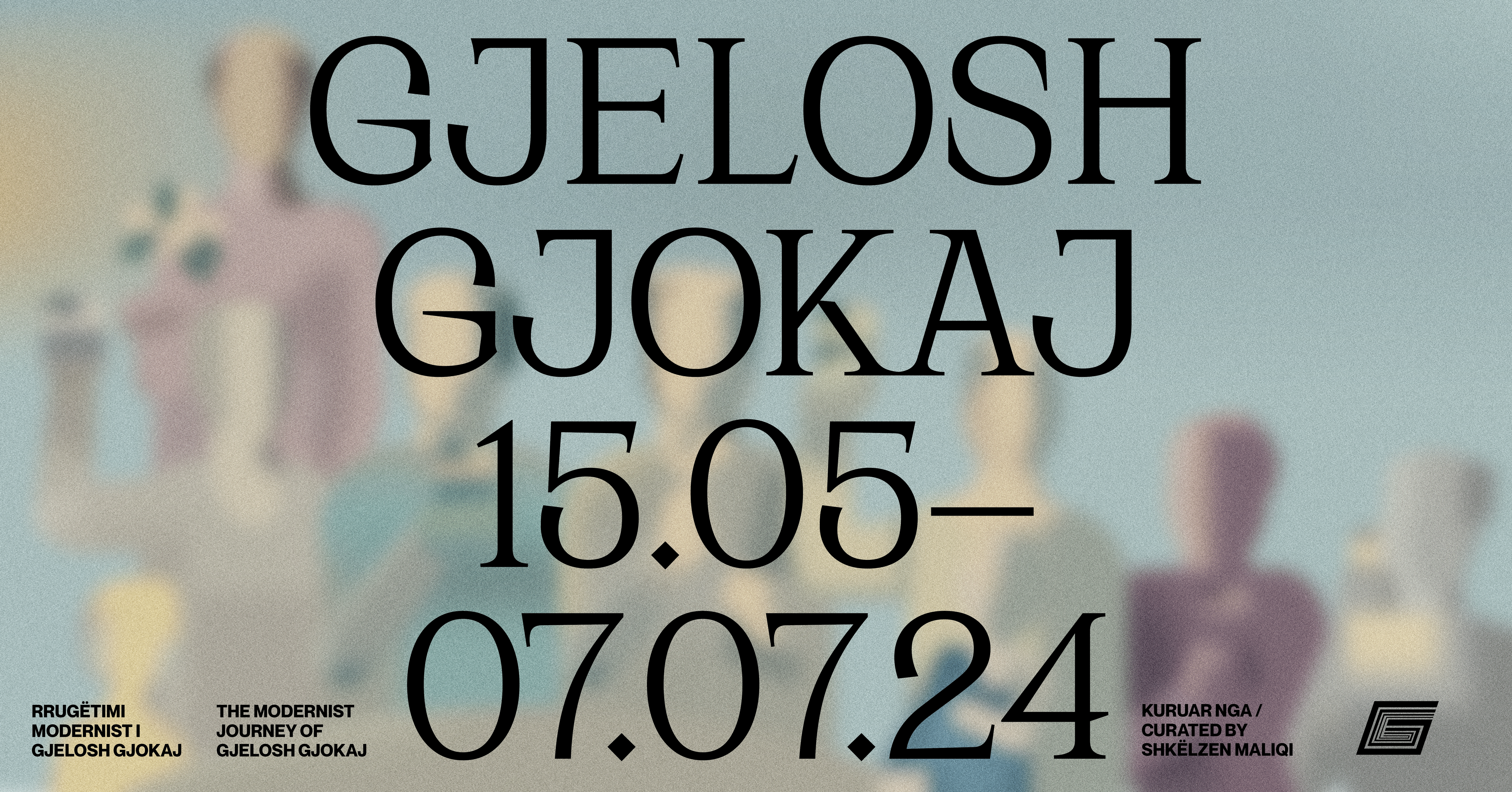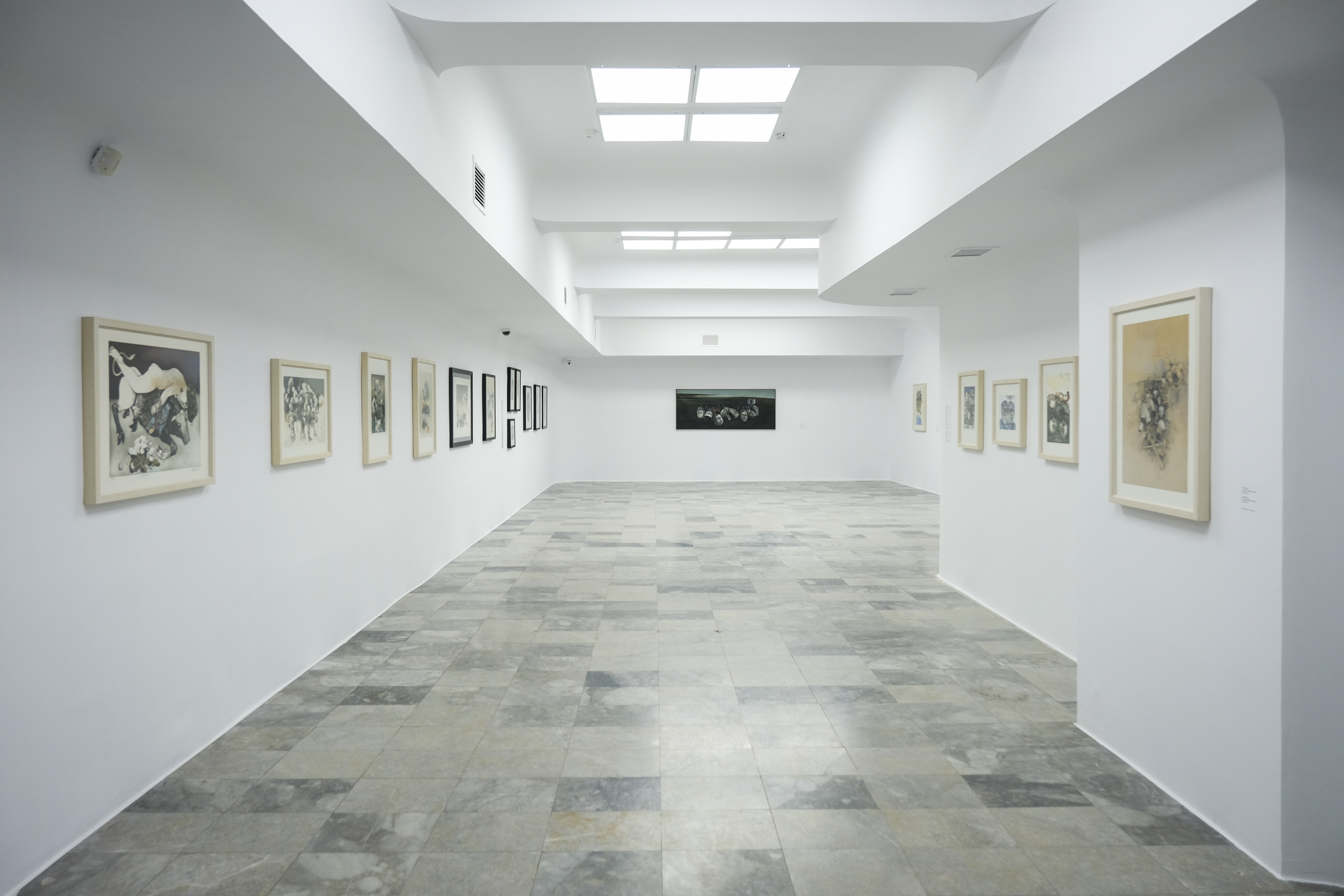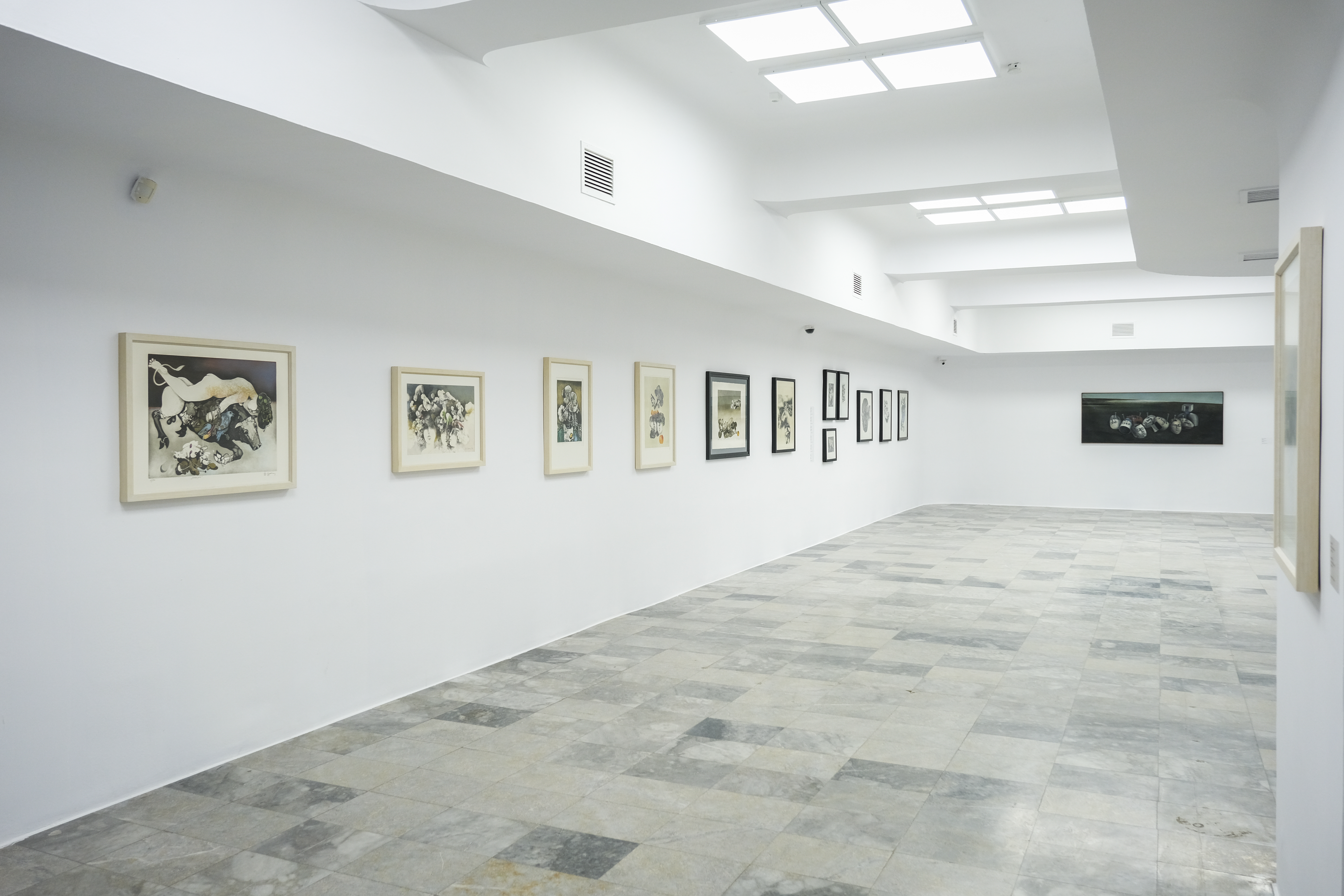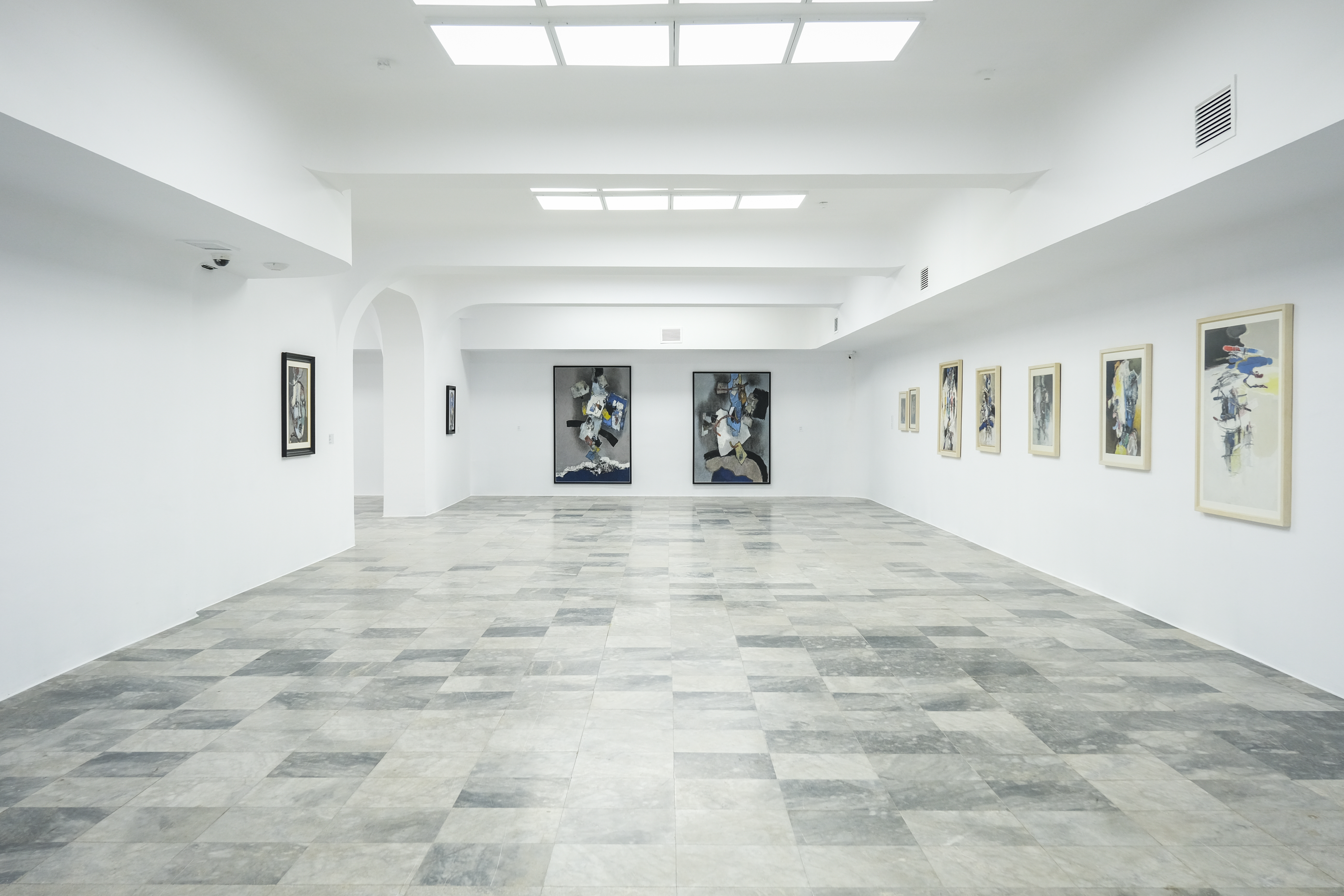The Modernist Journey of Gjelosh Gjokaj
In the early stages, Gjelos Gjokaj created paintings and printmaking with narrative and emblematic themes and features, such as the paintings with figures without identity that look like children's toys, but which the artist presents as "mobilized" in totalitarian phalanxes, where the individual takes on a mechanical and robotic appearance and behavior, as an image of the technicization of modern life that leads to dehumanization of society.
The images of Gjokaj's early art refer to his teenage memories of World War II, but find anxious continuity even as they address the catastrophic threats of the Cold War of the mid-20th century that threatened the outbreak of nuclear war and the annihilation of humanity. This deviant influence of misused technicism on Gjokaj's works of the 70s and 80s seems to deal with a current topic even today, on the challenge that artificial intelligence robots pose to humans. In this aspect, Gjokaj's paintings replicate through images the Heideggerian thematization of the challenges of modern humanity. In the 50s, German philosopher Martin Heidegger wrote about "the desolation of the earth" and "the transformation of man into raw material" or "subject to exploitation". Gjokaj's series of busts and "sprouting heads", where he sketches grotesque images of the repair or mending of man, seem like illustrations of Heideggerian discourse.
In the 80s, Gjokaj moved away from the representational image to approach what Merleau Ponty called "the silent pictorial world". He avoids static compositions and puppet mise-en-scene figuration, to return to abstract images as in an experimental phase of the 60s when he played with basic geometric shapes. Now abstraction is dynamic and expressive, leading to the confrontation of forms and colors with explosive effects. The cycle of paintings from the mid-80s, with the collision of mechanical birds in space, where their fight creates chaos, is especially noteworthy. Those images seem to warn of the suicidal end of every battle between the two warring mechanisms.
In the '90s works, Gjokaj completely avoids the approach of "painting" ideas and orders, to which he stood faithful for more than three decades. The remnants of reality in his painting during this phase are something we could call a scene of pure pictorial fluxes and collisions. The artist still maintains the basic feeling of a poetic conflict, but now with completely abstract forms, in which real figuration is not discernible.
Curated by Shkëlzen Maliqi



